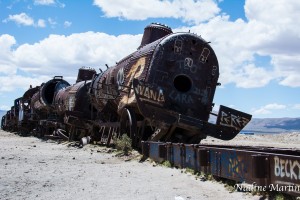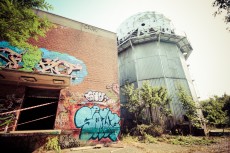Built in 1976, not much remains of this former 148 rooms hotel. In fact, apart from a concrete structure and graffitis, there is only industrial waste. The building has 18 floors and looks like an old white elephant amidst a changing neighborhood...
The train cemetery in Uyuni, Bolivia
Asi es la vida
It is at Uyuni, a small town of just over 10,000 inhabitants located more than 3,670 meters above sea level that can be found one of the most famous train cemetery. Well, we must also say that the world's largest salty desert is located in Uyuni : the Salar of Uyuni. But hey, that's another story.
This unusual cemetery has its origins in the railway history of the country and this city which was once the largest crossroads of Bolivia railway. With its 10 million inhabitants, Bolivia is landlocked by Peru and Argentina to the east, north Brazil and Paraguay and Argentina to the south.
Thus, the carcasses of the thirty locomotives and wagons attracts its share of tourists. While some balk against the look of semi-dump of the place, others like to walk down this post-apocalyptic western atmosphere where rust does its work on these locomotives of the past century.
Related content
The origin of this construction is surprising. It must first be known that it is located at the top of an artificial mountain made of rubble and other residues from the buildings destroyed during the Second World War. Then, this mountain itself...
Blue Bonnets racetrack saga is not about to end anytime soon. One of the main topic of Montreal 2013 election was the huge eco-friendly residential project that politicians wanted to implant on the former racetrack site. Despite the fact that the...
Abandoned, barricaded and destroyed at the south entry of the Lachine Canal, the tunnel Wellington currently offers lack of interest for urban exploration (can't go inside).
Back in 1990, it permanently ceases its activities with the...























